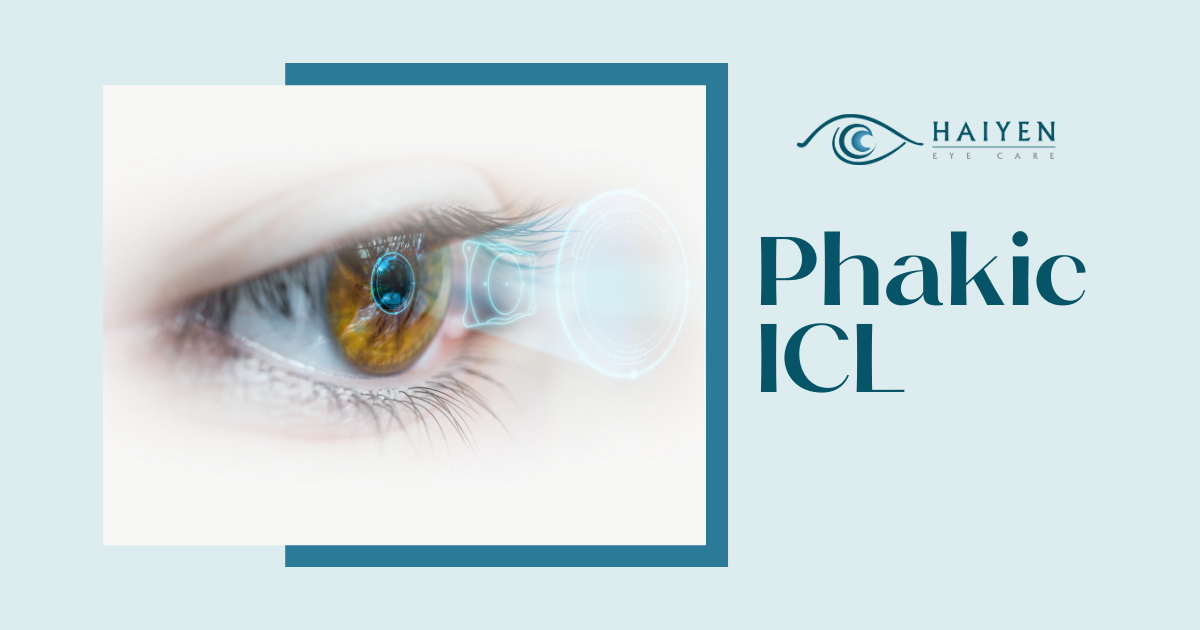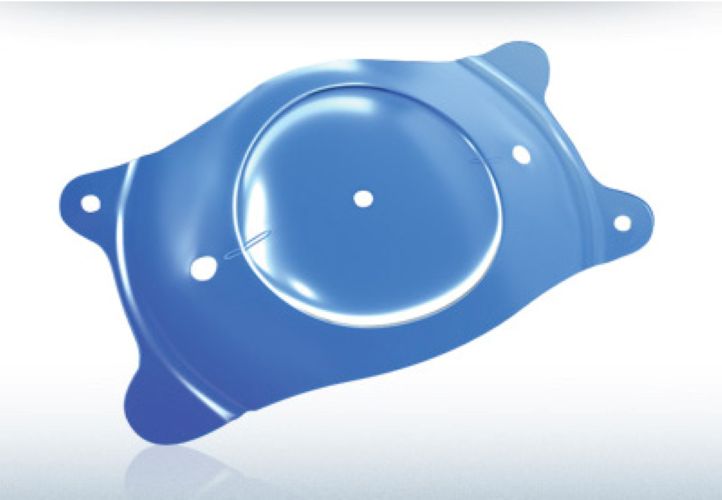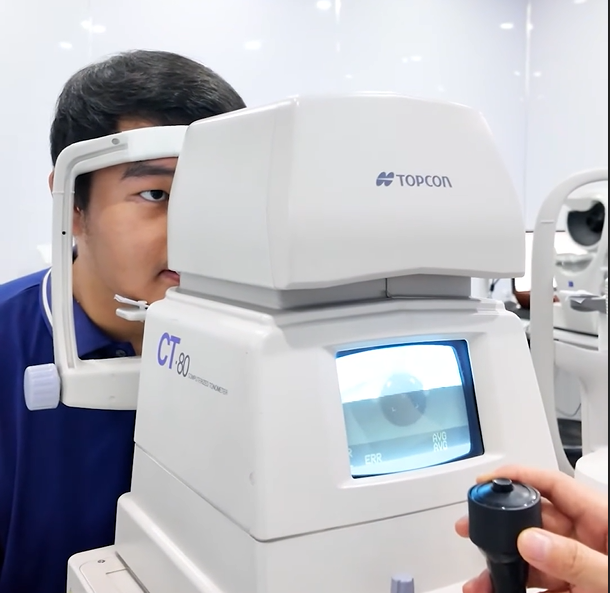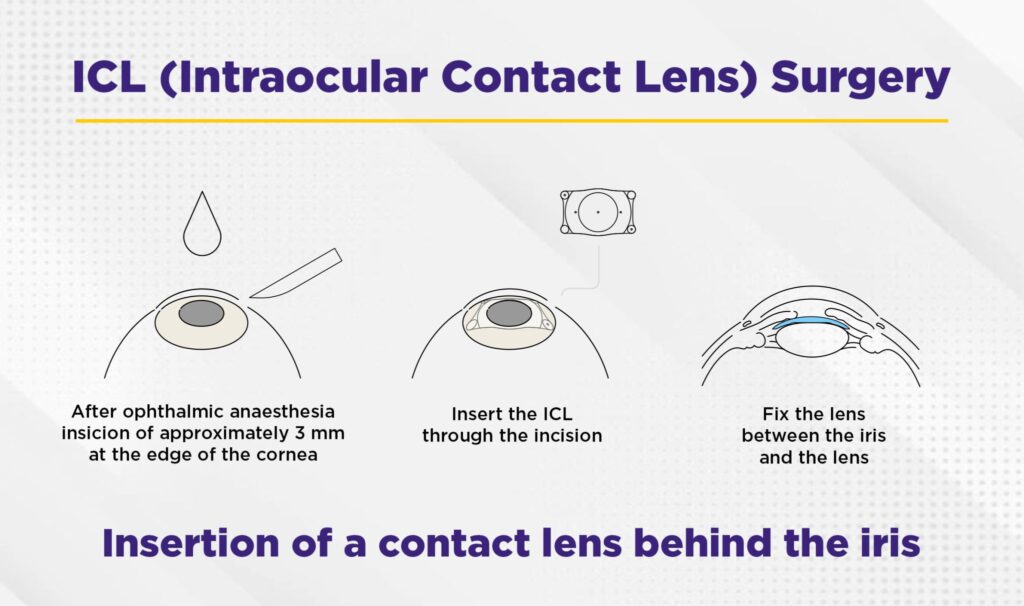Introduction

From -6.0D Myopia to Freedom Without Glasses – Phakic ICL Helps You See Clearly
Myopia not only affects studying and working but also limits many opportunities in life. For people with high myopia of -6.0D or more, dependency on glasses or contact lenses often becomes a burden. The story of Mr. Cao Nghiep – who had -6.0D myopia and underwent Phakic ICL (Phakic ICL) surgery at Hai Yen Eye Care – is clear proof of the outstanding effectiveness of this technology.
Patient experience: from worry to positive surprise
Before surgery, Mr. Cao Nghiep had -6.0D myopia. He chose to undergo the procedure at Hai Yen Eye Care and shared: “The surgery was quite fast and painless, and surprisingly, just one day later my eyes could see clearly without glasses.”
This experience reflects the core advantages of Phakic ICL: a short procedure, quick recovery, and remarkable visual outcomes right after surgery.
What is Phakic ICL (Phakic ICL)?
Phakic ICL is an intraocular lens made from biocompatible Collamer material, placed behind the iris and in front of the natural crystalline lens.
This mechanism acts like an “added lens” for the eye, allowing light to focus precisely on the retina. Unlike laser procedures that reshape the cornea, Phakic ICL does not damage the cornea, making it suitable for those with thin corneas, dry eyes, or high myopia.
Key benefits of Phakic ICL for high myopia patients

Key benefits of Phakic ICL for high myopia patients
Phakic ICL (Phakic ICL) surgery is opening new life opportunities for people with high myopia. For a patient with -6.0D, vision was restored clearly just 24 hours after surgery, bringing true freedom from glasses. This story highlights the superiority of Phakic ICL technology in modern refractive correction.
The greatest distinction of Phakic ICL lies in its Collamer® lens, placed delicately behind the iris and in front of the natural lens, completely preserving the cornea. This allows the eye to maintain structural stability long-term, while avoiding the common complication of dry eye seen in laser methods. Many former contact lens users who suffered irritation and discomfort have regained comfort and natural vision after Phakic ICL.
Visual quality after surgery remains stable day and night. Sharp vision, high contrast, and reduced glare in low-light conditions give patients a clear difference when driving at night or working under dim lighting. The procedure itself is fast, typically lasting only 20–30 minutes. Patients can resume light activities within 1–2 days under the doctor’s instructions.
Another strong advantage of Phakic ICL is its removability. In specific circumstances, when visual needs change or upon medical advice, the lens can be safely removed by a surgeon. This offers peace of mind that today’s decision still leaves options open for the future.
The experiences of millions of patients worldwide and over 20 years of clinical studies have demonstrated the safety and effectiveness of Phakic ICL. With an impressive 99.4% of patients willing to choose the procedure again, Phakic ICL not only improves vision but also enhances overall quality of life.
Phakic ICL is suitable for patients with myopia from -3.0D to -20.0D, with or without astigmatism of 1.0D to 4.0D, especially those with thin corneas, dry eyes, or who are not eligible for laser surgery. Through the collaboration of TD Eye and Hai Yen Eye Care, this solution is now more accessible to patients in Vietnam, helping them achieve clear, safe, and lasting vision.
Who is a good candidate for Phakic ICL surgery?
According to international clinical practice, Phakic ICL is typically suitable for:
- Myopia from –3.0D to –20.0D, possibly with astigmatism (about 1.0D–4.0D depending on assessment).
- Stable refraction for at least one year; thin cornea or unsuitable conditions for laser surgery.
- Dry eye or intolerance to contact lenses; desire for better night vision quality.
- Adults who meet safety criteria such as anterior chamber depth and endothelial cell density measured during detailed examinations.
The final decision must be based on full refraction tests, biometric measurements, and endothelial evaluations. The doctor will determine lens size, correction power, and post-surgery follow-up plan.
Basic procedure and post-surgery care
After comprehensive eye exams, the doctor performs the Phakic ICL procedure in a sterile operating room. Before surgery, pupils are dilated and local anesthesia is applied. The lens is inserted through a very small incision at the edge of the cornea, unfolded behind the iris, and adjusted precisely, followed by monitoring intraocular pressure and vision. After surgery, patients use prescribed eye drops, avoid rubbing their eyes in the early days, and attend follow-ups to ensure long-term safety and visual quality.
Why choose Hai Yen Eye Care?

Professional examination process at Hai Yen Eye Care
- Specialized Phakic ICL surgeons: experienced, well-trained in international safety standards of intraocular surgery.
- Modern diagnostic equipment: refraction tests, corneal topography, anterior chamber depth, endothelial count, supporting personalized decisions.
- Sterile, closed surgical process: complying with strict risk control steps and standard post-operative care.
- Personalized consultation: customized treatment plans for each patient’s myopia, astigmatism, eye anatomy, and vision goals.
The cooperation between Hai Yen Eye Care and TD Eye provides a comprehensive examination–surgery–care experience, bringing international-standard Phakic ICL treatment for high myopia to Vietnam.
Conclusion: High myopia is no longer a barrier
From a -6.0D patient to glasses-free vision in just one day, Phakic ICL has proven to be an effective and safe solution for patients with high myopia, thin corneas, or dry eyes. If you are seeking freedom from glasses with natural visual quality and fast recovery, arrange a consultation at Hai Yen Eye Care.
The professional team will conduct a comprehensive evaluation and recommend the most suitable Phakic ICL treatment plan for your eyes.

 vi
vi 15-Sep-2025
15-Sep-2025
.svg) Hotline
Hotline Appointment
Appointment https://haiyeneyecare.com/
https://haiyeneyecare.com/ 31A Nguyễn Đình Chiểu, Đa Kao Ward, District 1, Ho Chi Minh City
31A Nguyễn Đình Chiểu, Đa Kao Ward, District 1, Ho Chi Minh City Opening Hours
Opening Hours







 0916.741.763
0916.741.763